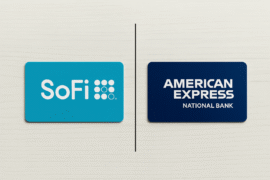This article may contain references to products or services from one or more of our advertisers or partners. We may receive compensation when you click on links to those products or services. Nonetheless, our opinions are our own.
Key Highlights
- Nonemployee compensation means payments made to people or businesses that are not considered employees, like freelancers and independent contractors.
- Freelancers must take care of their own income tax and self-employment taxes.
- Businesses report nonemployee compensation of $600 or more using Form 1099-NEC.
- Freelancers should keep track of their income and expenses all year and file their taxes by the deadlines.
- Good record-keeping is important, and using accounting tools can make tax filing easier.
Introduction
The gig economy is growing fast. More people are picking independent contracting or freelancing for more flexibility. This type of work has several benefits, but it is important to understand nonemployee compensation, especially during tax time. This guide will explain what nonemployee compensation is, how it works, and how to handle it well.
Understanding Nonemployee Compensation
Nonemployee compensation means payments made to people or businesses for services, but they are not considered employees. This often includes freelancers, independent contractors, consultants, and those who work for themselves.
Unlike regular employees, who get their taxes taken out by their employers, people who get nonemployee payments must handle their own taxes. This means they need to report their income. They must also make estimated tax payments and file the right tax forms using a taxpayer identification number.
Nonemployee Compensation in the Gig Economy
The gig economy creates different types of income. This income is usually known as nonemployee compensation. Here are some examples:
- Freelance work in writing, graphic design, and consulting costs.
- Jobs with contracts for companies.
- Work on projects without a set pay.
Freelancers usually get paid for each project or when they finish a task. This difference affects how they report their income and what expenses they can claim.
For many freelancers, Schedule C is the main tax form to report their income and expenses. Knowing how to use Schedule C the right way can help freelancers get the most deductions and make sure their tax filing is correct.
Why Managing Nonemployee Compensation Well Matters
Handling payments for nonemployees is important for freelancers to avoid IRS penalties and tax issues. Some common mistakes are:
- Not keeping track of income well and not reporting it correctly
- Blending personal money with business money
- Ignoring tax responsibilities, which can result in fines
Freelancers must closely monitor all their earnings throughout the year. It is important to distinguish nonemployee compensation from other types of income. This helps with tax planning and following the rules.
Additionally, depending on how much work there is, a freelancer may need to file a business tax return along with their regular return. Knowing these rules helps freelancers stay clear of issues with the IRS.
How to Manage Nonemployee Compensation
To manage nonemployee compensation well, you need to stay organized. You must also keep proper records and plan for taxes in advance.
Essential Documents and Information
Freelancers must get a Taxpayer Identification Number (TIN) from the IRS before they receive nonemployee compensation. If they don’t have this number, they need to obtain it. This number is necessary for tax reporting.
To stay organized, keep all money-related documents in one place:
- Contracts, pay stubs, and bills
- Receipts for costs related to business
- Form 1099-NEC (you get this from clients who paid $600 or more.)
If you need help with taxes, talking to a tax expert can give you advice that suits your money situation.
Setting Up a System to Track Income and Expenses
A good record-keeping system is important for keeping track of your earnings and expenses you can deduct. Think about using:
- Spreadsheets (for easy tracking)
- Accounting software (like QuickBooks, FreshBooks, or Wave)
- Dedicated business banking accounts to keep business and personal finances apart
Expense Tracking Tips:
- Keep a detailed log: Write down every transaction, noting the date, amount, method of payment, and the reason.
- Sort expenses: Group business costs into categories that can be deducted on taxes, like office supplies, travel, and training.
Step-by-Step Guide for Dealing with Nonemployee Compensation
Now that your money system is set up, follow these key steps to manage your nonemployee pay well.
Step 1: Identifying Tax Forms and Deadlines
As tax season gets closer, get to know the IRS forms and the deadlines for filing. The main tax forms for nonemployee pay include:
| Form | Description | Filing Deadline |
|---|---|---|
| Form 1099-NEC | Used by businesses to report nonemployee compensation to the IRS and the individual receiving payment. | January 31 |
| Schedule C | Used by sole proprietors and single-member LLCs to report business income and expenses. | April 15 (extensions available) |
| Form 1040 | The standard individual income tax form is used by most U.S. taxpayers to report total income and calculate tax liability. | April 15 (extensions available) |
Step 2: Calculating Taxes and Deductions
Since freelancers do not have taxes taken out automatically, they must figure out and pay estimated taxes every few months. This helps to prevent penalties from the IRS.
Key Tax Responsibilities
- Income tax: Starts with total earnings.
- Self-employment tax: Pays for Social Security and Medicare (is 15.3%).
- Estimated tax payments are due on April 15, June 15, September 15, and January 15.
Step 3: Maximizing Deductions
Freelancers can reduce their taxable income by taking business deductions on Schedule C. Some usual deductions are:
- Home office costs (if you have a special workspace)
- Internet and phone bills (if needed for work)
- Office supplies and gear
- Work travel and distance
- Education classes and certificates
Keeping clear records of deductible expenses can help you save on taxes and lower the chance of an audit.
Conclusion
Understanding nonemployee pay is very important for freelancers in the gig economy. Managing income well, tracking expenses, and following tax laws can help avoid penalties and improve money management.
Freelancers should plan ahead for taxes. They should use any deductions they can and talk to tax experts if they need help. By staying informed and organized, independent workers can reach their goals in freelancing over time.
Frequently Asked Questions
What is the contrast between nonemployee compensation and employee pay?
Nonemployee payment is shown on Form 1099-NEC. This means freelancers take care of their own taxes. On the other hand, wages are reported on Form W-2. Employers take out taxes for Social Security, Medicare, and income tax.
How can I report nonemployee pay on my tax return?
Freelancers must show their 1099-NEC income on Schedule C of their federal tax return. They need to add this income when filling out Form 1040 to figure out how much tax they owe.
Can I deduct expenses for earning nonemployee pay?
Yes, independent contractors can deduct valid business costs on Schedule C. This can lower their taxable income and taxes owed.

Reviewed and edited by Albert Fang.
See a typo or want to suggest an edit/revision to the content? Use the contact us form to provide feedback.
At FangWallet, we value editorial integrity and open collaboration in curating quality content for readers to enjoy. Much appreciated for the assist.
Did you like our article and find it insightful? We encourage sharing the article link with family and friends to benefit as well - better yet, sharing on social media. Thank you for the support! 🍉
Article Title: What Is Non-employee Compensation? A Simple Guide for Freelancers
https://fangwallet.com/2025/03/06/nonemployee-compensation/The FangWallet Promise
FangWallet is an editorially independent resource - founded on breaking down challenging financial concepts for anyone to understand since 2014. While we adhere to editorial integrity, note that this post may contain references to products from our partners.
The FangWallet promise is always to have your best interest in mind and be transparent and honest about the financial picture.
Become an Insider

Subscribe to get a free daily budget planner printable to help get your money on track!
Make passive money the right way. No spam.
Editorial Disclaimer: The editorial content on this page is not provided by any of the companies mentioned. The opinions expressed here are the author's alone.
The content of this website is for informational purposes only and does not represent investment advice, or an offer or solicitation to buy or sell any security, investment, or product. Investors are encouraged to do their own due diligence, and, if necessary, consult professional advising before making any investment decisions. Investing involves a high degree of risk, and financial losses may occur including the potential loss of principal.
Source Citation References:
+ Inspo
There are no additional citations or references to note for this article at this time.












































